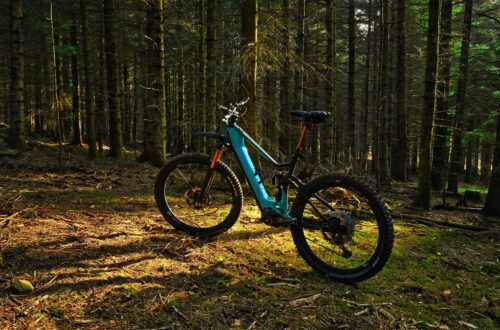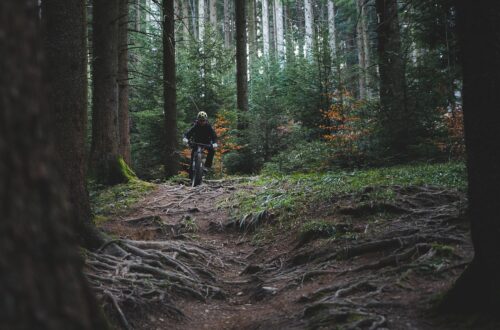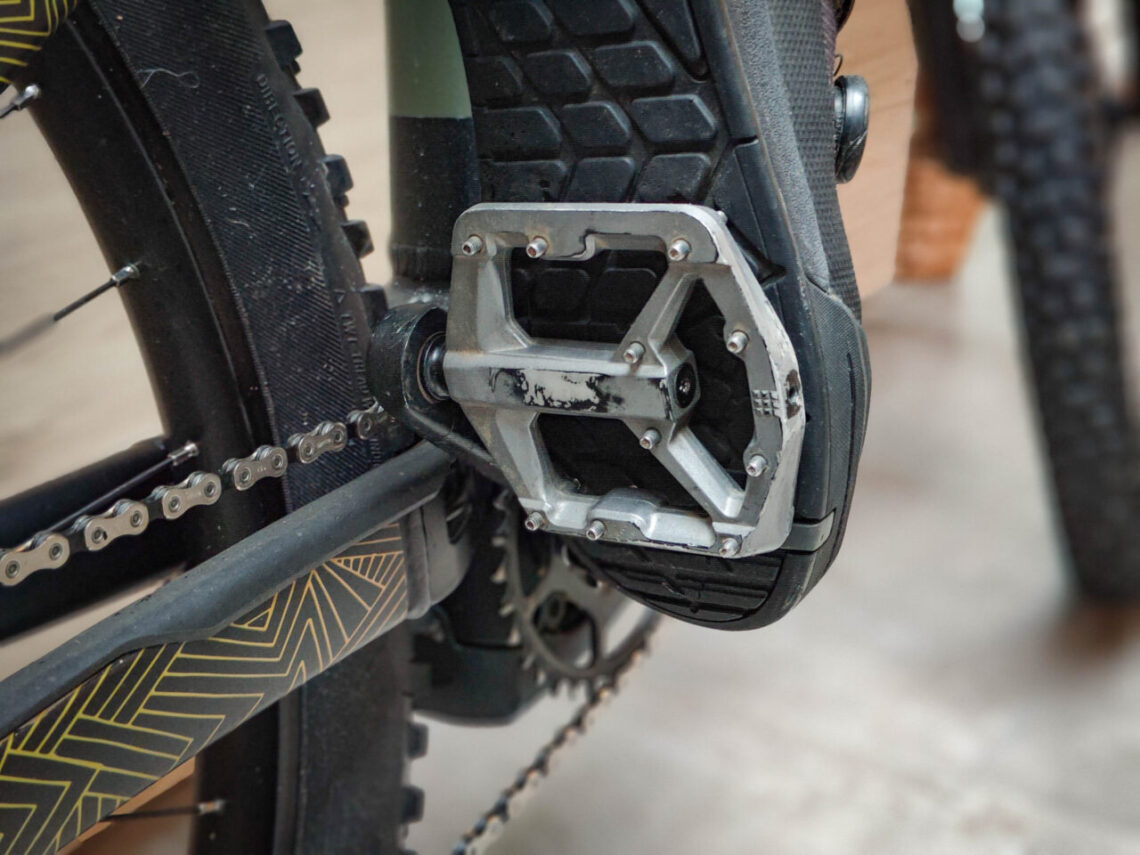
Clipless Or Flats For Enduro Mountain Biking?
What pedals to use on your mountain bike has always been a big topic. If you are a cross-country (XC) or a downhill mountain biker, the best option might be straightforward. But since enduro mountain biking is a combination of XC and downhill, should you go for clipless or flats?
Whether you go for clipless or flats for enduro mountain biking, is completely up to the rider’s capability. Flat pedals provide more freedom in foot placement which is beneficial for descending; clipless pedals improve performance during climbing. Overall will riding flats improve your technical abilities.
In this article, we’ll dive deeper into the thought behind flat and clipless pedals and in which field they excel. Understanding this will make it a lot easier to choose what type of pedal is the best for you.
What Do We Mean By Enduro Mountain Biking?
There are a lot of disciplines in mountain biking which can make things confusing at times. The main ones are: downhill (DH), cross-country (XC), trail and enduro/all mountain. Enduro mountain biking is a combination of cross-country and downhill. An enduro race for example, contains downhill-like descents but you need to to get to the top of the hill on your own power. Enduro mountain biking exists of speed, endurance, technique and efficiency.
A mountain bike that is suitable for enduro racing, looks like a mild downhill bike which is also set up for climbing. They are usually full suspension with a travel between 150-180 mm.
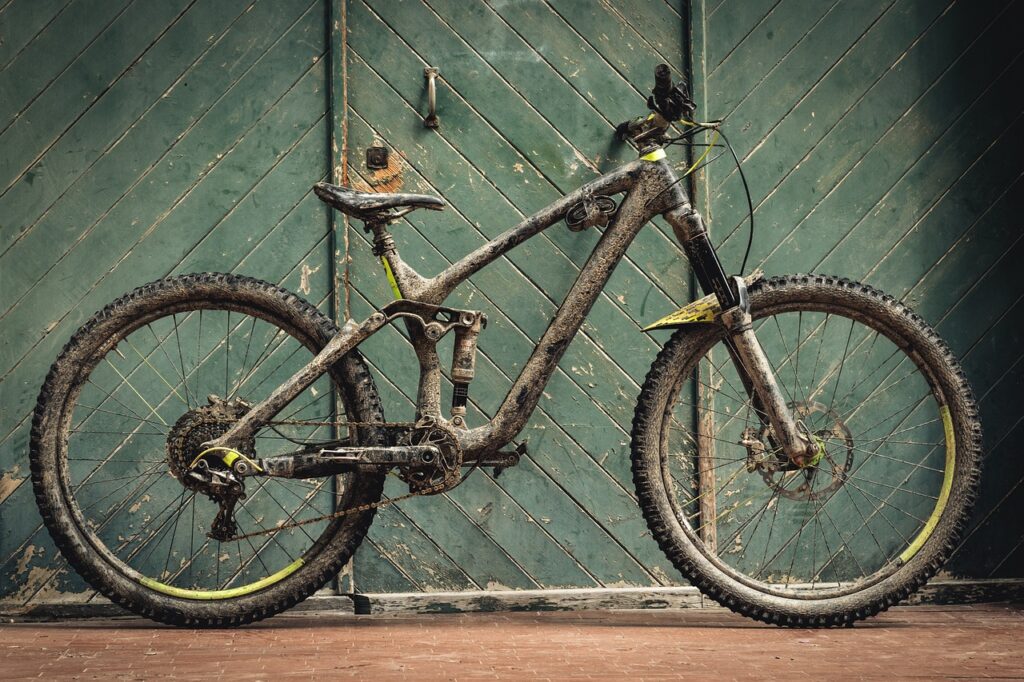
The Difference Between Clipless And Flats For Mountain Biking
If you are new to mountain biking, you might not be aware of the fact that there are basically two pedal types which can be used for mountain biking: clipless and flat pedals. Clipless pedals are also called SPD by a lot of people, which comes from the fact that Shimano was the first company to roll out clipless pedals for mountain biking in 1987: the SPD system.
Clipless pedals are actually quite the opposite of what the name suggests; you do actually clip in to them. The name ‘clipless’ comes from the absence of toe-clips or straps over the top of the riders shoe. These were used in the early days to hold the feet of the rider in place. They then got replaced by cleats under the shoe and a locking mechanism incorporated into the pedals, which is the clipless pedal as we know it today. It is said that clipless pedals improve efficiency since you’re able to pull up on the pedals as well as push down. They also provide a secure connection between bike and rider.
Research has shown that the clipless pedals actually do not enhance efficiency when riding under normal conditions. But in other research, it appears that you are faster on clipless pedals during a high power, uphill sprint.
Flat pedals or ‘flats’ are only used on mountain bikes and have the most similarities with pedals that can be found on a commuter bicycle. They consist of a flat surface with sharp pins to grip on your shoes. Although you don’t actually clip into them, you do need a specific shoe and pedal combination to get the most grip. The thought behind flat pedals is that they offer the rider a lot of freedom in foot placement which is great for descents. Changing your position or dabbing a foot down in a corner, is a piece of cake. There’s never the worry about not being able to clip in or out quick enough.
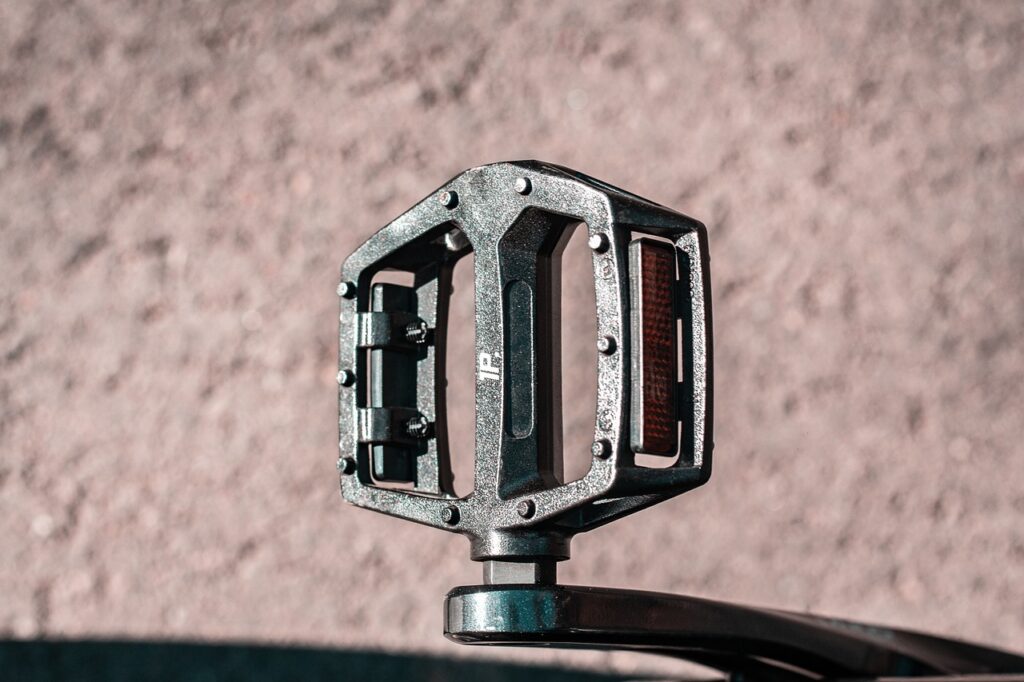
At last, there are pedals which combine some of the features of both pedal types. Some clipless pedals have a cage around the locking mechanism which offer a greater contact surface and more stability. This also makes it easier to ride clipped out. Other alternatives offer a locking mechanism on one side, and flat surface on the other so you can ride with or without cleats. Both in-between-pedals are often used by people who are either new to mountain biking or ride road bikes as well as mountain bikes. In situations where speed is key, they are definitely not the best option.
Clipless Or Flats For Enduro Mountain Biking?
After reading about the differences between clipless and flats, you now understand that there are situations where one pedal is more suitable than the other. But which one to choose for enduro mountain biking? Let’s break enduro up into downhill and cross-country and look at how both pedals perform in these sports.
Downhill mountain biking consists of fast descents with jumps, drops, berms and obstacles. It’s not about pedaling uphill with efficiency, but more about confidence and maintaining speed. A flat pedal is the best way for the rider to act quickly on what’s coming; repositioning or dabbing down a foot can be done easily. A clipless pedal would no be useful since there’s the risk that the rider isn’t able to clip in or out quick enough and loose valuable time or control. But with flat pedals there’s always the risk of bumping off the pedals and getting injured by the sharp pins.
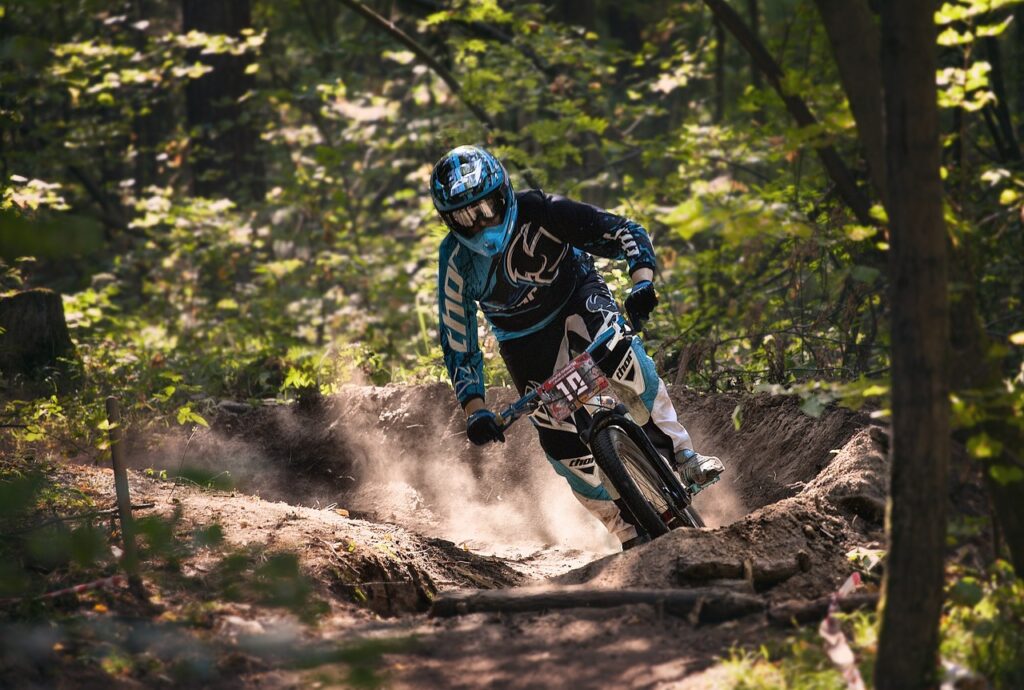
Cross-country mountain biking is a lot slower than downhill mountain biking, but does require great endurance. An XC-trail can be a forest trail with climbs, descents and some natural obstacles like roots and rocks. Since fast reaction times isn’t what cross-country cycling is all about, the secure connection a clipless pedals provides is a great match for this sport. Being able to pull up your pedals will also enhance cycling performance during an uphill sprint.
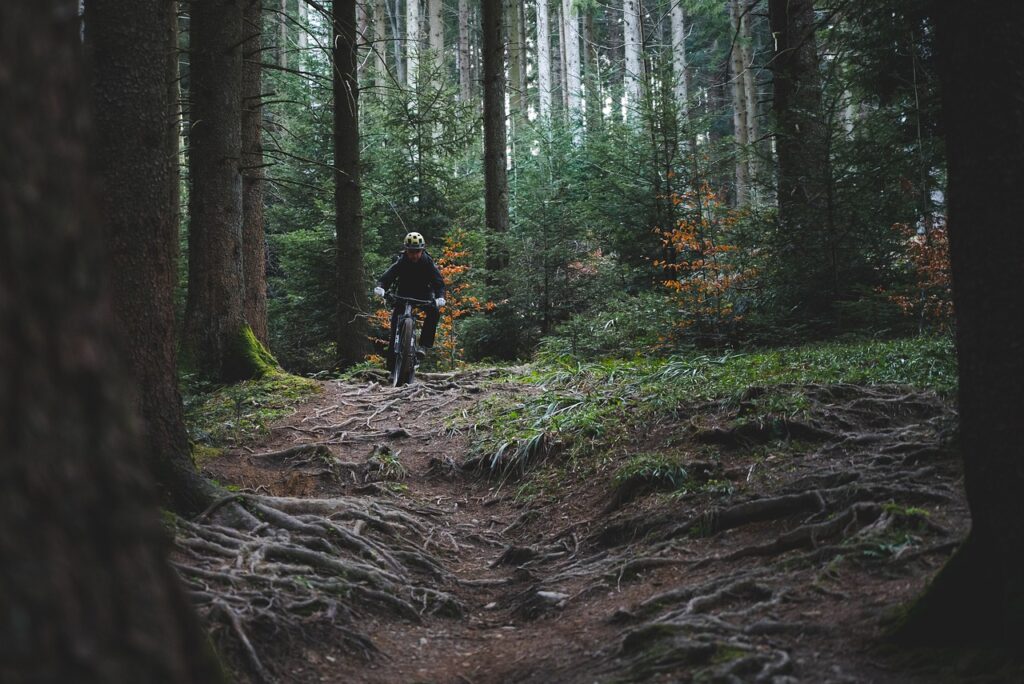
It is impossible to say what the best type of pedal is for enduro mountain biking, as it comes down to the skill of the rider. Some people can’t get used to the locking system of the clipless pedal and fall each time they get to a stop. Other people don’t like the feeling of not being locked to the pedals and feel insecure when riding flats. You can look at it this way: if the trail you plan on riding consists of a lot of steep descents, then flat pedals are probably the best way to go; if the trail consists largely of climbing and flat sections were you are able to sprint, then clipless pedals are the better option.
Since you don’t want to switch pedals for each type of trail, I’d advise you to try (enduro) mountain biking on flat pedals. It might be a bit harder at first, but once you get the hang of it, it’ll be totally worth it. It is the most natural way of cycling and a great skill to learn. You will also be able to anticipate more quickly to unforeseen circumstances and it will give you more bike control in the long run.
Pros And Cons Of Clipless Pedals VS Flat Pedals
To summarize the differences between clipless and flats, here’s is an overview of the pros and cons of both pedal systems:
CLIPLESS PEDALS
Very suitable for climbing
+ Secure connection between rider and bike
+ Improve performance: pedals can be pulled
+ Easy to position the bike
+ Consistent foot placement
– Takes skill to learn how to clip in and out
– System can get clogged up with dirt
– Pedals need proper adjusting
FLAT PEDALS
Very suitable for descending
+ A lot of freedom in foot position
+ Easy to use; self explanatory
+ Will always work under heavy conditions
+ A lot of feedback from the terrain
– No possibility to pull the pedals up
– Chance of injury because of the sharp pins
– Takes more skill to (re)position the bike
What Pedals To Use For Electric Mountain Bikes?
Electric mountain bikes are design-wise quite similar to non-electric enduro bikes. Because e-mtbs are heavier and can carry more speed on the trails, they need to be more robust than a cross-country mountain bike. Travel- and dimension-wise, they are set up to ride enduro-style trails. Riders that have switched from a regular mountain bike to an electric mountain bike, tend to ride faster, farther and more often on an e-mtb. They also ride in places were they would’t ride with a regular bike. They feel more secure and are now capable of riding the more technical stuff with more power.
For electric mountain bikes, I would definitely advise you to use flat pedals. Even if you don’t plan on taking on an enduro-trail, being clipped in on a heavy bike like an e-mtb is risky. On flats you are much faster with anticipating to a sudden loss in grip. The ‘efficiency’ or the fact that you can sprint faster with clipless pedals, isn’t needed on an electric mountain bike since you’ve now got electric motor power. More on the differences between electric and non electric mountain bikes in my article: Are Electric Mountain Bikes The Future?
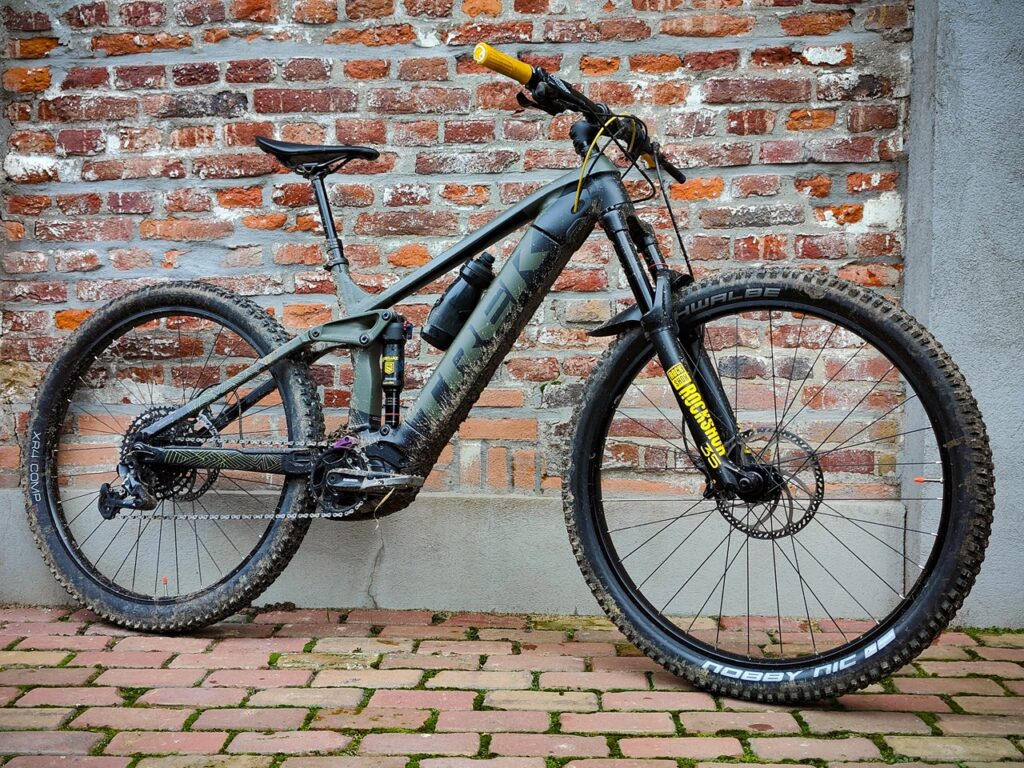
Frequently Asked Questions
Clipless Or Flats For Cross-Country Mountain Biking?
Clipless pedals are great for cross-country (XC) mountain biking. They improve performance during uphill climbing because you can pull up on the pedal as well as push down. Steep descents however, are easier on flat pedals since you don’t have to worry about clipping in and out time.
Are Clipless Pedals More Efficient Than Flat Pedals?
Research has shown that clipless pedals do not enhance efficiency. During a test where 3 shoe-pedal combination have been tested, it appeared that cycling with clipless pedals costs the same amount of energy as cycling with flat pedals.
How To Use Clipless Pedals For The First Time?
The best way for you to get used to clipless pedals, is to train clipping in and out indoors. Adjusting the pedals to the loosest setting will make practicing much easier. When outdoors for the first time, it’s advised to clip out well in advance before getting to a full stop.



